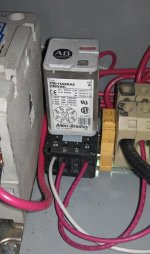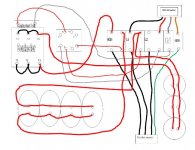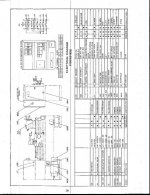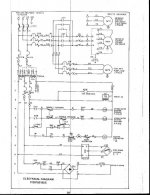rule308x
Plastic
- Joined
- Apr 20, 2012
- Location
- USA, Near Nashville Tennessee
Hello,
My 15 hp rotary phase converter, which has been working fine for months, is having a problem. I don't have the schematic and did not build the unit and am looking for help diagnosing and fixing the problem. It is wired to a 220v 60 amp breaker and has been powering a 6.75 hp nardini lathe. When it is switched on the idler motor comes up to speed quickly and quietly and stays running. When a load is applied (lathe turned on) the contactor sputters and arcs (see video).
I'm not an electrician but I can use a multimeter. I've pictured the box and the major components below. I can provide more pics and information if that will clarify.



I would be grateful for any help diagnosing the problem or suggestions for fixing the problem. I'd be willing to replace the automatic components with manual switches if necessary.
Thanks,
Jeff
My 15 hp rotary phase converter, which has been working fine for months, is having a problem. I don't have the schematic and did not build the unit and am looking for help diagnosing and fixing the problem. It is wired to a 220v 60 amp breaker and has been powering a 6.75 hp nardini lathe. When it is switched on the idler motor comes up to speed quickly and quietly and stays running. When a load is applied (lathe turned on) the contactor sputters and arcs (see video).
I'm not an electrician but I can use a multimeter. I've pictured the box and the major components below. I can provide more pics and information if that will clarify.
I would be grateful for any help diagnosing the problem or suggestions for fixing the problem. I'd be willing to replace the automatic components with manual switches if necessary.
Thanks,
Jeff







